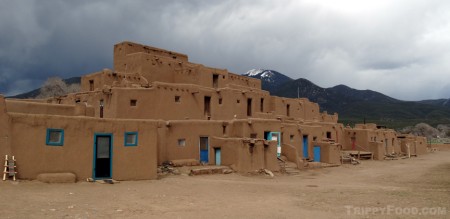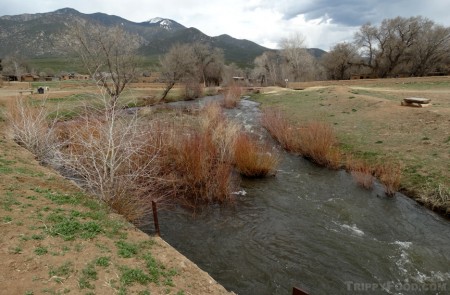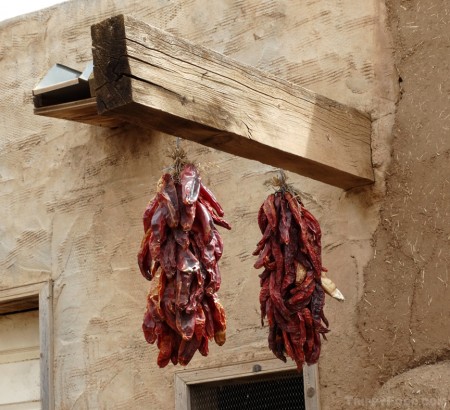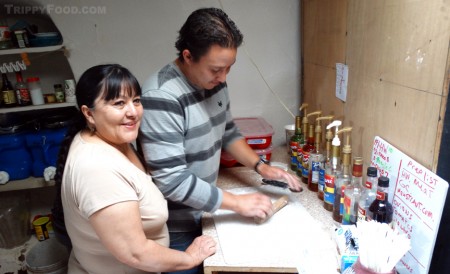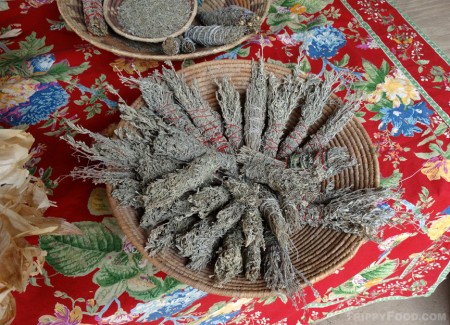Taos Pueblo, New Mexico
Americans of European ancestry imagine a trip to Taos, New Mexico should include browsing through the galleries and studios of the vibrant century-old artist community or a day of exceptional skiing at Taos Ski Valley, yet a visit to the area without experiencing Taos Pueblo is a missed opportunity to understand how a culture that thrived centuries before a lost Christopher Columbus trod roughshod through the New World persevered with pride and determination despite centuries of oppression. The Taos tribe of Pueblo Indians took their name from the Tiwa description of the area as “the place of the red willows”. The pueblo was established approximately a thousand years ago, with most of the adobe dwellings dating between 1000 and 1400 A.D., making it the one of the oldest continuously inhabited communities in what is now the United States. Of nearly 2000 Taos tribe members living in the area on ancestral lands, around 150 live full time inside the old pueblo without electricity or running water in living quarters that have been passed down through generations of family.
The thick adobe walls were designed for insulation from the elements as well as security; entrance to the one or two room dwellings was originally through a hole in the roof via a ladder (which could be retracted for safety). Remnants of the Spanish conquest in the early 17th century are painfully obvious, starting with the 1850 Mission San Geronimo de Taos (which anchors the pueblo and was built by forced labor in an effort to convert the Taos people to Christianity). The original church was built in 1619, but destroyed several times during conflict with the Spanish, as well as the territorial government of the United States; at the entrance to the pueblo, only the bell tower remains, reserved as a holy place to commemorate the men, women and children who died there after the U.S. Calvary put down the Taos Revolt of 1847. The Spanish also introduced the concept of doors and cemetery burials in caskets. While a large portion of the Native American community incorporate some form of Christianity into their belief system, they also maintain much of their original ideology (the Virgin Mary figures prominently in religious imagery, acting as a surrogate for the earth mother).
With the indignities unleashed upon the Taos people by the Spanish, Mexico, marauding Comanche, and the United States, one has to wonder why they freely and open-heartedly welcome tourists into their ancient home, but they do so in a warm and inviting manner that is a model of peace and friendship. Before visiting, become familiar with the customs and respect the values and decorum set down by tribal law so that you do not become the ugly American. If local crafts are your souvenir of choice, many shops located at the pueblo offer authentic and hand-made art, including unique glittery pottery infused with mica – ask for permission before photographing tribal members and respect their wishes if they decline.
There are no restaurants to speak of in the pueblo, but a unique dining experience is to be had at the Adobe Cafe, located directly across from the church. The tiny one-room cafe is run by Mary Esther Winters (whose Tiwa name translates to Looking for Blueberries) and her son Robbie (Eagle Bow) in a family-bestowed adobe dwelling with a fireplace for heat and a wood stove tucked into a diminutive kitchen. All of the food is made from scratch on the premises; the signature Pueblan fry bread is made from ground blue corn that was grown at the pueblo. While sandwiches, Frito pie, salads, and other substantial menu items appear handwritten on the board, the perfect accompaniment to the sweet fry bread is a hot cup of freshly brewed piñon coffee, flavored with locally grown and roasted piñon (pine nuts). Winters gushes with pride at a large Kodak print hanging on the far wall of the cafe – it is a photo of her grandfather, Ben Marcus, whose image was selected to be one of the 30 by 36 foot illuminated color prints displayed on the Picture Tower at the Kodak Pavilion during the 1964 – 1965 World’s Fair in New York. While her joy in running the cafe is obvious, Winters looks to a time in the near future when she can take Adobe Cafe mobile via a food truck.
The people of the Taos Pueblo are resilient survivors, keeping alive a way of life simplistic in 21st century terms, but honoring an ancient and noble tradition; the village should be the chief destination of any visit to Taos.
Taos Pueblo
120 Veterans Highway
Taos NM 87571
GPS Coordinates: 36°26’17.22″N 105°32’49.47″W

